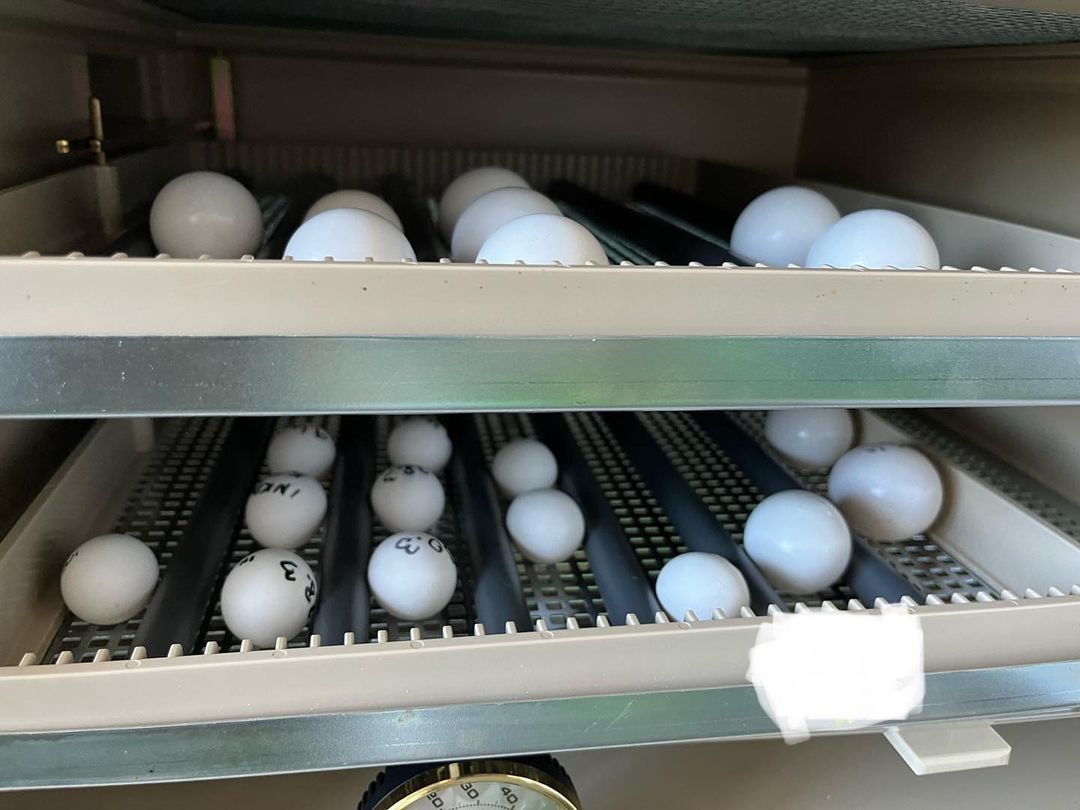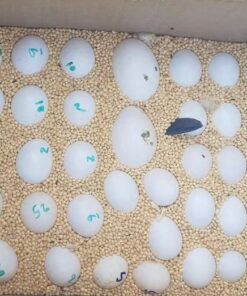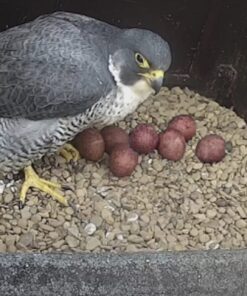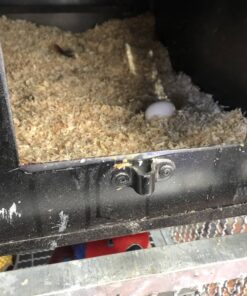Baudin’s black cockatoo Eggs
$60.00
Baudin’s black cockatoo Eggs
Baudin’s black cockatoo, also known as the long-billed black cockatoo (Calyptorhynchus baudinii), is a species of black cockatoo endemic to the southwest of Western Australia. It is named in honor of the French explorer Nicolas Baudin. Here are some key features and facts about Baudin’s black cockatoo:
Physical Description
– Size: They are relatively large birds, typically measuring between 50-60 cm in length.
– Coloration: Predominantly black plumage with white patches on the tail feathers and a distinctive long, slender beak.
– Sexual Dimorphism: Males and females look similar, though males may have darker beaks and eye-rings compared to females.
Habitat
– Natural Habitat: These birds are typically found in eucalypt forests, particularly in areas where marri (Corymbia calophylla) and jarrah (Eucalyptus marginata) trees are prevalent.
– Range: Their range is limited to the southwestern corner of Western Australia, a region known for its unique biodiversity.
Diet
– Feeding Habits: Baudin’s black cockatoos primarily feed on the seeds of marri and jarrah trees. They use their long bills to extract seeds from the hard seed capsules of these trees.
– Other Foods: They may also consume insects and other plant materials, depending on availability.
Behavior
– Social Structure: They are social birds, often seen in flocks. During the breeding season, they form pairs.
– Breeding: Nesting usually occurs in large tree hollows, and they have a relatively low reproductive rate, with typically one chick raised per breeding season.
Conservation Status
– Threats:The main threats to Baudin’s black cockatoo include habitat destruction due to logging and land clearing, competition for nesting sites with feral bees and other species, and illegal poaching.
– Conservation Efforts: They are listed as endangered under Australian law. Conservation efforts include habitat protection and restoration, research on their ecology and behavior, and public awareness campaigns.
Cultural Significance
– Recognition: Baudin’s black cockatoo is an iconic species in Western Australia, often used in environmental campaigns and as a symbol of the region’s unique wildlife.
Interesting Facts
– Beak Adaptation: The long beak of Baudin’s black cockatoo is specially adapted for extracting seeds from hard capsules, which distinguishes it from other black cockatoo species in the region.
Baudin’s black cockatoo plays a crucial role in the ecosystem of southwestern Australia, particularly in seed dispersal and maintaining the health of their forest habitats. Conservation efforts are critical to ensuring the survival of this unique and striking bird.
Come find out the numbers we have still have at the farm
The black cockatoo grows to 50-60 cm in length and weighs between 560 and 720 P. It has sharp black feathers with a white border that gives it an outward appearance. It has longer black feathers on the top of its head, forming a short crest that can be raised and lowered, as well as a distinctive white cheek feather. The caudal fins have a narrow central field of black feathers with white stripes on the side feathers extending to the tip.
Female Baudins have white bills with black tips, white cheekbones and a gray eye ring. The male has a black beak, an irregular gray-white cheek and a pink eye ring. Both young males and females have a white bill, a gray eye and fewer white tail feathers.
Description
Baudin’s black cockatoo Eggs
The Fascinating World of Baudin’s Black Cockatoo Eggs
Introduction to Baudin’s Black Cockatoo
Baudin’s Black Cockatoo, a remarkable species native to southwestern Australia, is a symbol of the region’s unique wildlife. These striking birds are known for their black plumage, white patches on their tail feathers, and their raucous calls. However, what truly captivates enthusiasts and researchers alike are the intricacies of their reproductive process, particularly their eggs.
Egg Characteristics
Baudin’s Black Cockatoo eggs are as fascinating as the birds themselves. The eggs are typically white, oval-shaped, and slightly larger than a chicken’s egg. Each clutch usually contains one to two eggs, with one being the norm. These eggs are incubated by the female for about 29 to 31 days, a period during which she remains vigilant and protective.
Nesting Habits
These cockatoos are very particular about their nesting sites. They prefer tall, mature trees, particularly eucalyptus, where they can find deep hollows to lay their eggs. The selection of the nesting site is critical for the survival of the eggs and the future chicks. The female does most of the incubating, while the male provides food and protection.
Threats to Baudin’s black cockatoo Eggs Survival
Unfortunately, Baudin’s Black Cockatoo faces significant threats, particularly during the egg-laying and incubation periods. Habitat loss due to deforestation is one of the primary concerns. As mature trees are cut down, suitable nesting sites become scarce, endangering the survival of this species. Additionally, predation by other animals and competition for nesting sites with other birds further threaten the survival of Baudin’s Black Cockatoo eggs.
Conservation Efforts
Conservationists are working tirelessly to protect Baudin’s Black Cockatoo and ensure the survival of their eggs. Efforts include habitat restoration, the establishment of protected areas, and the installation of artificial nest boxes. These initiatives are crucial in providing safe environments for the cockatoos to breed and thrive.
Conclusion
Baudin’s Black Cockatoo eggs are more than just a step in the reproductive cycle; they represent the delicate balance of nature and the urgent need for conservation. Protecting these eggs means safeguarding a species that plays a vital role in the biodiversity of southwestern Australia.
Baudin’s black cockatoo or long-killed cockatoo, named after the French explorer Nicholas Baudin, is endemic to Western Australia. This does not happen anywhere else in the world. The species is considered critically endangered (IUCN 2021), with a population decline of 90% in the last three generations. The population is now estimated at only 2,500 to 4,000 adults.
Edward Lear described Calyptohynchus (Baudin’s black cockatoo) in 1832 and Ivan Carnaby (1908-1974) described Calyptohynchus latirostris (Carnaby’s black cockatoo) in 1948. The gall covers the lower jaw; latirostris is from the Latin word lotos et gallos and is similar to the French word baudinii.
The Baudin herd was brought from the north of Gidgegannup, from the east of Wandering, west only in the areas of Midland, Gosnells, Byford, Bunbury and south on the banks of the Margaret River, Stirling and Porongorup. Baudin’s cockatoos need water, especially Carnaby’s wild habitat because of the stones, although habitat damage can be prevented by both groups. In Perth, the Carnabys live in the Swan Seaside area, while the Baudins live in the Perth Mountains.




